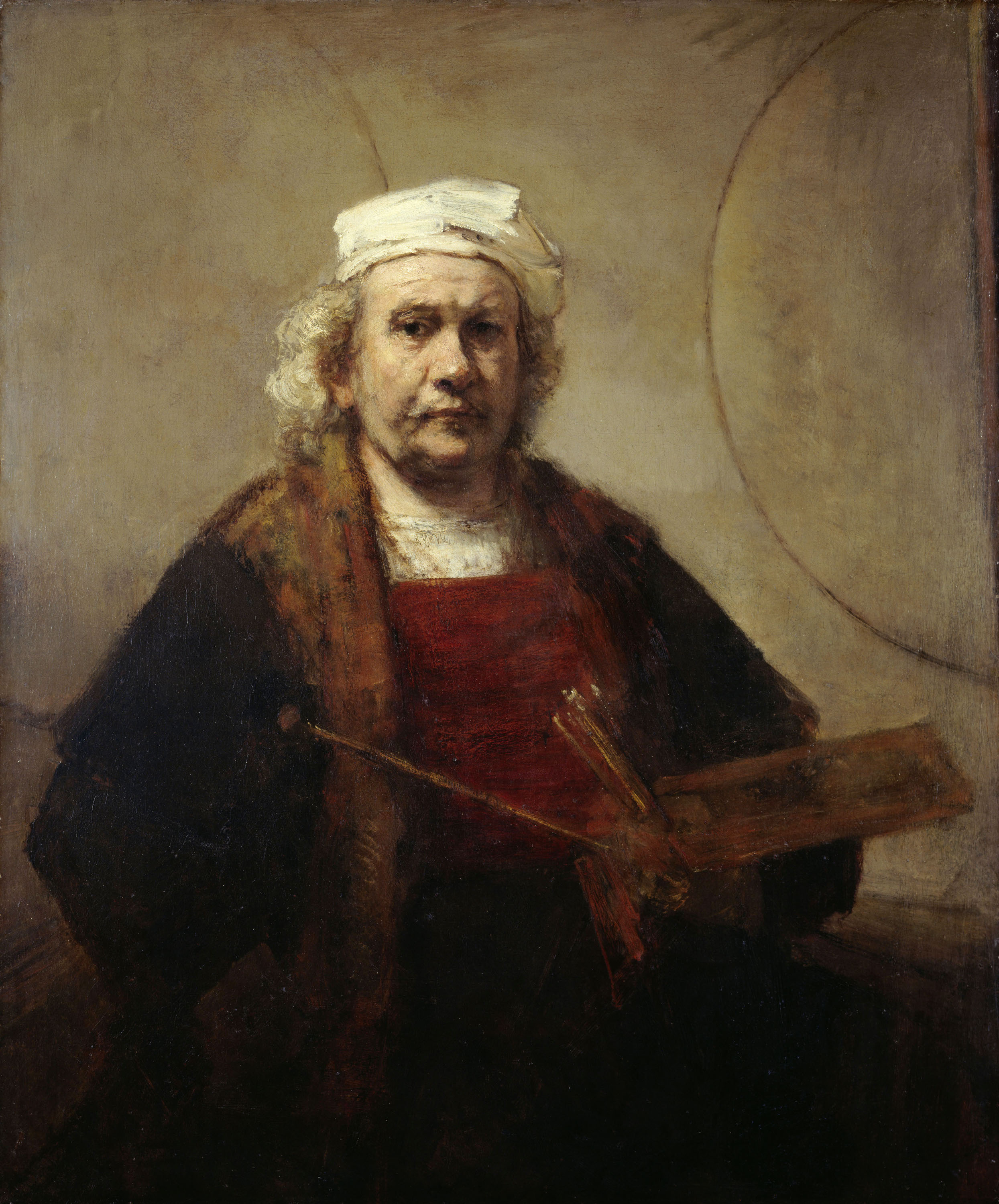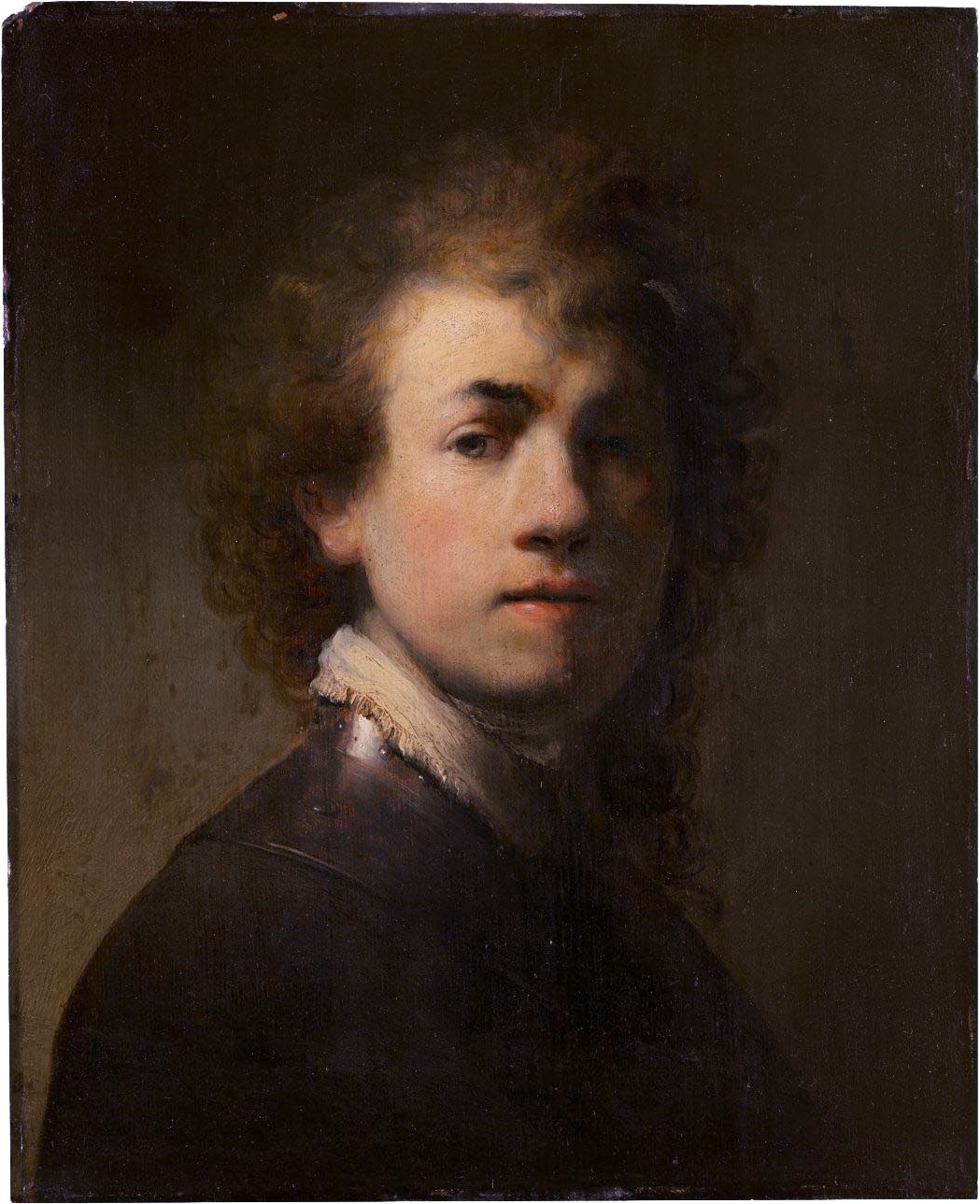Self-Portrait with Two Circles is one of over 40 painted self-portraits by Rembrandt. It is also a late self-portrait, from the period when he had lost most of his fortune. Rembrandt wears a fur-lined robe, beneath which is a red garment. On his head is a white hat, similar to that worn in several other late self-portraits.
In the painting, Rembrandt holds his palette, brushes, and maulstick. The painting is notable for its monumentality and the enigmatic background consisting of a shallow space with the fragments of two circles. The painter with one hand on his hip, appears confrontational and even defiant.
Rembrandt’s bankruptcy in 1656 did not spell the end of his reputation although a commission from the Stadhuis of Amsterdam was returned to him shortly after its installation in 1662. Recent research has exploded the myth of the forgotten artist. Indeed in 1667, two years before Rembrandt’s death and at about the same time as this portrait was painted, he received a visit from Cosimo III de’ Medici (later the Grand Duke of Tuscany) who was passing through the Netherlands on his Grand Tour. Apparently Cosimo met a great many artists while in the Netherlands but in his journal only three were described as famoso, one of these being Rembrandt.
Rembrandt died on this day in 1669 in Amsterdam.
P.S. Rembrandt's most famous work is The Night Watch. Here are 15 things you may not know about this great painting!


 Rembrandt van Rijn
Rembrandt van Rijn